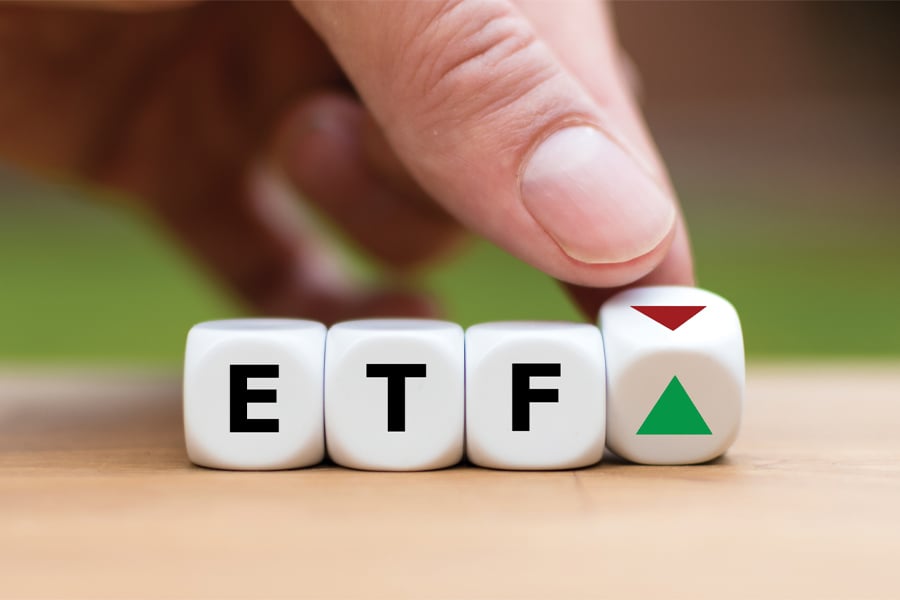

Several leveraged single-stock exchange-traded funds that gained attention during last year’s equity rally have seen sharp declines in recent weeks, raising concerns about investor understanding of their risk profiles.
The performance swing highlights the volatility built into these funds, which use derivatives and borrowing to magnify daily price moves of underlying securities.
As reported by the Wall Street Journal, products offering amplified exposure to high-profile companies such as MicroStrategy and Tesla have lost between 80 and 83 percent of their value since peaking in November.
Competing MicroStrategy-focused funds launched by Defiance ETFs and Tuttle Capital Management saw their prices surge more than tenfold between September and November, reeling in billions of dollars from investors along the way.
Since then, they've reversed course: while the funds remain up from their launch price, Morningstar estimates that investors are collectively sitting on losses of about $1.7 billion due to the timing of inflows.
“It is like a thresher,” Morningstar analyst Jeffrey Ptak told the Journal. “Money goes in and it doesn’t come out.”
Leveraged single-stock ETFs debuted in the US in 2022, after gaining approval from regulators. Unlike traditional leveraged ETFs that offer exposure to broad indexes, these newer vehicles track individual equities – opening investors in them up to substantially greater concentration risks – and are typically marketed to short-term traders.
Despite warnings from fund issuers that these products are not intended for long-term holdings, their popularity has grown. According to Morningstar, total assets in leveraged ETFs increased 51 percent year over year, reaching $134 billion at the end of January.
“These products have become very popular, to a worrisome extent,” Ptak said.
The funds are part of a larger trend toward complex exchange-traded strategies. A January analysis from CFRA showed that 40 percent of all ETFs listed in the US in 2024 have derivatives as a central component of their strategy, double the share from 2014. Leveraged and inverse ETFs now make up about one-third of all derivatives-based equity ETFs, while leveraged single-stock products represent 9 percent.
The top three single-stock leveraged funds – tracking Nvidia, Tesla, and MicroStrategy – have been especially popular with retail traders, many of whom were drawn by social media hype and short-term performance.
Even during steep drops, retail traders can all too quickly pile into the strategies in a bid to amp up hoped-for gains from dip-buying. During the DeepSeek-induced January selloff in tech stocks, which saw stock market darling Nvidia lose nearly $600 billion of its market cap evaporate in one day, traders shoved $1 billion into the GraniteShares 2x Long NVDA Daily ETF, representing the fund's biggest single-day inflow record.
But the more recent reversal highlights the challenge of timing such volatile investments. Fund managers and analysts continue to warn that while gains can be dramatic in rising markets, the losses can be equally severe in a downturn, especially for those who do not actively manage their positions.
“Investors may not fully appreciate how quickly or severely leveraged funds’ performance can veer off course,” Ptak said.

The leadership changes coming in June, which also include wealth management and digital unit heads, come as the firm pushes to offer more comprehensive services.

Strategist sees relatively little risk of the university losing its tax-exempt status, which could pose opportunity for investors with a "longer time horizon."

As the next generation of investors take their turn, advisors have to strike a fine balance between embracing new technology and building human connections.

IFG works with 550 producing advisors and generates about $325 million in annual revenue, said Dave Fischer, the company's co-founder and chief marketing officer.

Five new RIAs are joining the industry coalition promoting firm-level impact across workforce, client, community and environmental goals.
RIAs face rising regulatory pressure in 2025. Forward-looking firms are responding with embedded technology, not more paperwork.
As inheritances are set to reshape client portfolios and next-gen heirs demand digital-first experiences, firms are retooling their wealth tech stacks and succession models in real time.
